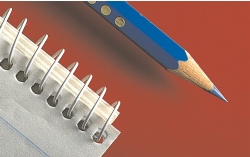Quick links to procedures on this page:
Using individual color-adjustment effects and tools
Corel PHOTO-PAINT provides you with filters (adjustment effects) and tools to make adjustments to the color and tone of images. When you adjust the color and tone, you adjust elements such as hue, saturation, brightness, contrast, or intensity. If you want to adjust the color and tone of the entire image, you can apply an adjustment filter directly to the image or apply a lens which exists on a separate object layer and can be edited without changing the original image. For information about lenses, see “Working with lenses.”
You can adjust part of an image by editing the size and shape of a lens or by creating an editable area before applying an adjustment filter. For information about editable areas, see “Working with masks.”
Before you start working with individual filters, try using the Image Adjustment Lab. For information about the Image Adjustment Lab, see “Using the Image Adjustment Lab.”
The table below lists the filters that can be used to make adjustments to images.
Choosing color and tone filters
Some filters adjust an image automatically, while others give you various degrees of control. For example, the Auto adjust filter adjusts the tonal range across all color channels automatically, while the Tone curve filter lets you use separate color channels to pinpoint and adjust tone or color. More advanced filters, such as the Tone curve filter and the Contrast enhancement filter, are precise and can correct many different problems, but using them requires practice.
Using histograms
You can view the tonal range of an image by using a histogram to evaluate and adjust the color and tone. For example, a histogram can help you detect hidden detail in a photo that is too dark because of underexposure (a photo taken with insufficient light).
A histogram has a horizontal bar chart that plots the brightness values of the pixels in your image on a scale of 0 (dark) to 255 (light). The left part of the histogram represents the shadows of an image, the middle part represents the midtones, and the right part represents the highlights. The height of the spikes indicates how many pixels are at each brightness level. For example, a large number of pixels in the shadows (the left side of the histogram) indicates the presence of image detail in the dark areas of the image.
Each photo above has a different exposure: average (top), overexposed (middle), underexposed (bottom). The histograms for each photo (on the right) show how the pixels are distributed, from dark to light. In an average photo, pixels are more evenly distributed across the tonal range.
A histogram is available with the following filters:
Adjusting color and tone by using brush effects
You can adjust the brightness, contrast, hue or saturation in part of an image by applying brush effects. For example, if you want to lighten one object in a photo, you can use the Brightness tool to lighten the area you want without affecting the surrounding area.
You can use preset brushes or create a custom brush. For more information, see “Creating custom brushes.”
To adjust image color and tone |
![]()
|
•
|
|
For descriptions of adjustment filters, see “Exploring adjustment filters.”
|
![]()
|
•
|
|
You can compare the original image with the adjusted image by clicking the Dual window preview button
|
|
•
|
|
You can adjust the color and tone in an editable area by defining an editable area before you click an adjustment filter.
|
To adjust image tone interactively by using a histogram |
|
The arrow on the left lets you darken shadow areas. Drag the arrow until it points to the area where the histogram starts to spike.
|
|
The arrow on the right lets you lighten highlight areas. Drag the arrow until it points to the area where the histogram stops spiking.
|
![]()
![]()
|
•
|
|
You can compare the original image with the adjusted image by clicking the Dual window preview button
|
To adjust image color and tone by using brush effects |
|
1.
|
|
Select an object or the background image.
|
|
•
|
Contrast tool
|
|
•
|
Hue tool
|
|
•
|
Hue replacer tool
|
















